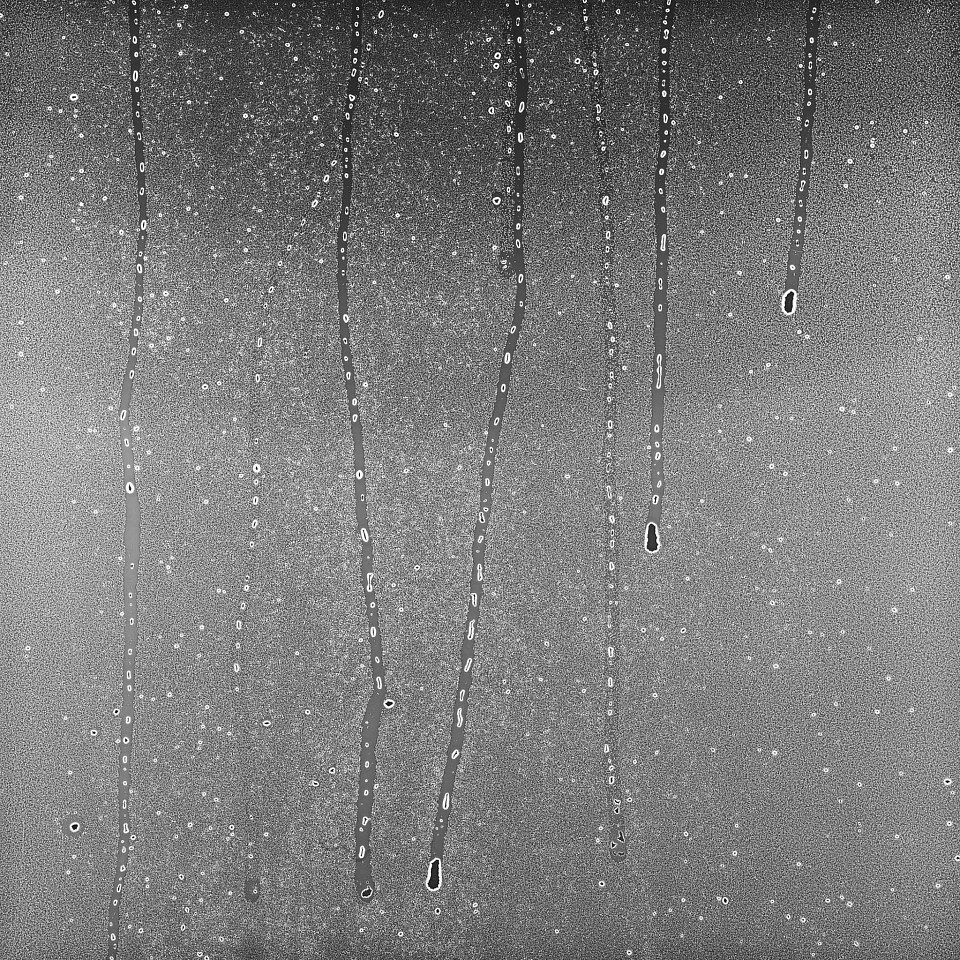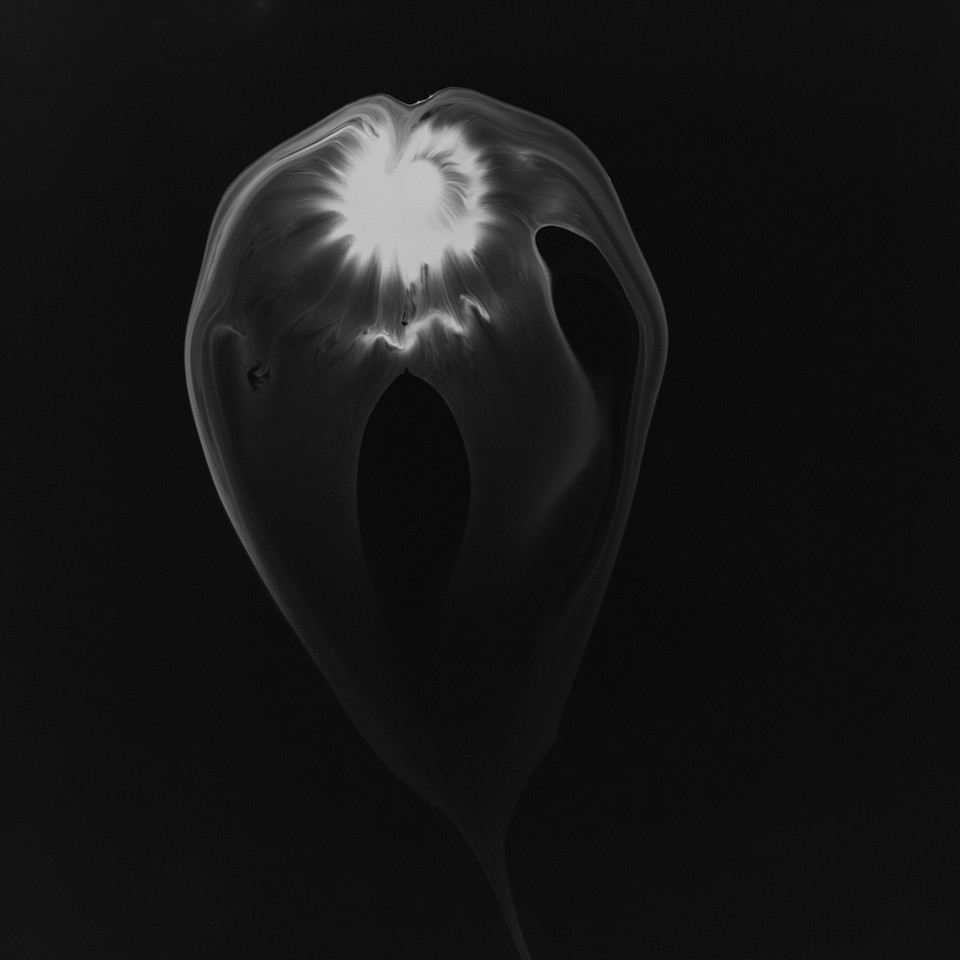by Kathi Larsen
“By blowing, drawing, and generally manipulating bubbles and lines of water on the paper’s surface, I ground the subject in reality while ultimately producing an image of pure abstraction. The shadows of actual objects are proof of the objects’ existence. Through art making I am trying to believe that I am truly existing in this space and time.” —Gen Aihara
When most people think of photography they imagine a camera of some sort—film, digital, or cellphone—is involved in the process. They are unaware of the various methods that can be used to make a photograph, which literally means to “write with light,” where a camera is unnecessary. A few that come to mind are chemigrams, lumen prints, and photograms. This post will concentrate on the photogram.
The photogram utilizes photographic processes that go beyond just capturing a beautiful scene with a modern camera. It is experimenting with technique, concept, support, and final presentation. It is getting your hands dirty, so to speak; working beyond the pretty picture to the conceptualized and tangible elements of a photograph.
A photogram is simply a form of contact printing and is similar to the early photogenic drawings of William Henry Fox Talbot of plants, lace, and other flat objects. An object or objects are laid directly atop photosensitive paper which is exposed to a light source and processed in photographic chemicals. The process yields unique images that are oftentimes unexpected, mysterious, and expressive. New York-based artist Gen Aihara creates stunning photograms that capture the movement and intangible qualities of the bubbles and water he uses to create his works. When viewers first encounter the works of Aihara they may find themselves trying to figure out just what it is that they are looking at, or they may try to interpret the meaning behind the image. Both are valid. But the point of Aihara’s work is not to solve the riddle of what or why but to consider their metaphorical concept. As Aihara puts it: “proof of an object’s existence” and that he is “truly existing in this space and time.” They represent the existence of object, space, time, and photographer. Below are four examples of Aihara’s work.
To view more of Aihara’s work visit: http://www.leemarksfineart.com/artist/Gen_Aihara/works/142
To learn more about how to create alternative photographs visit: http://www.alternativephotography.com/processes/




